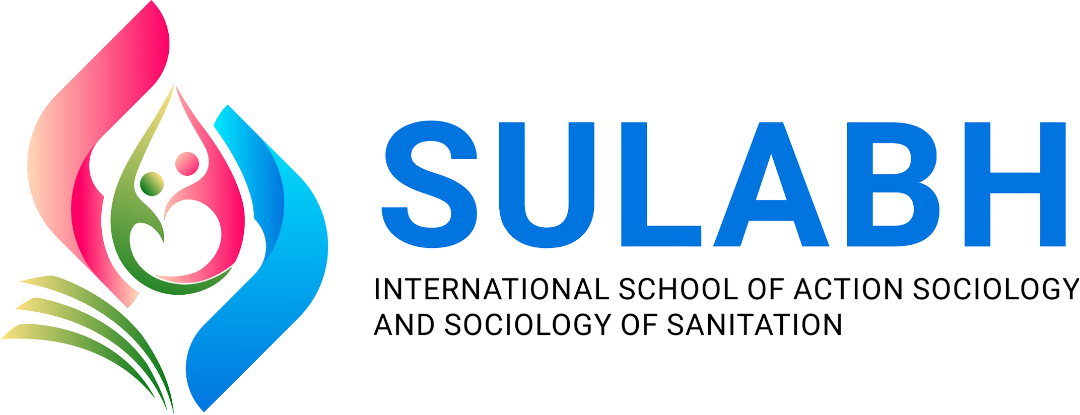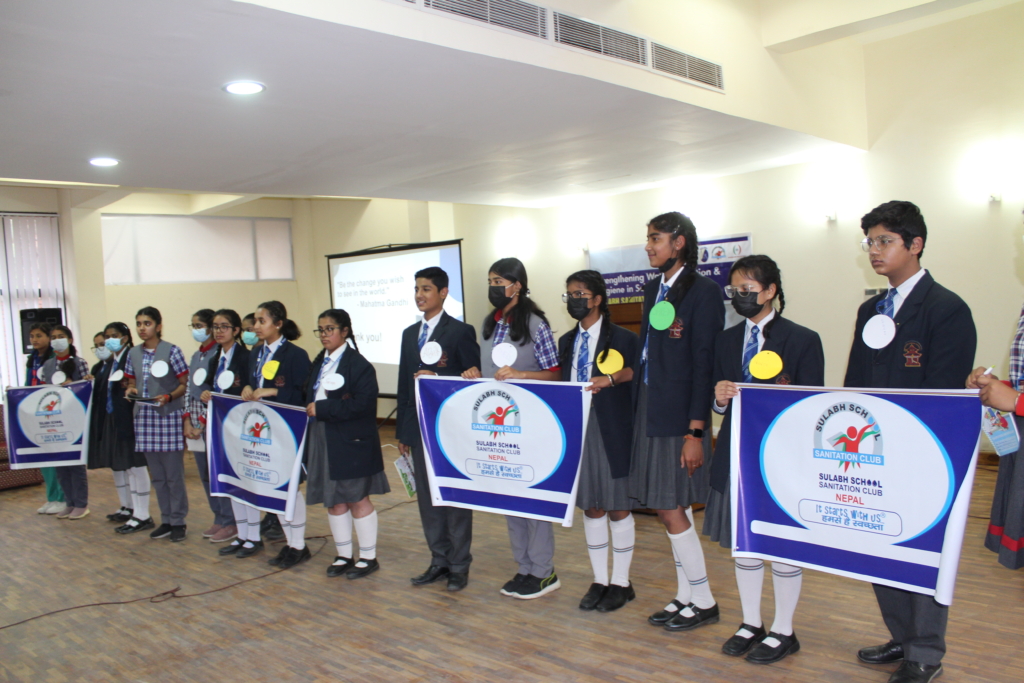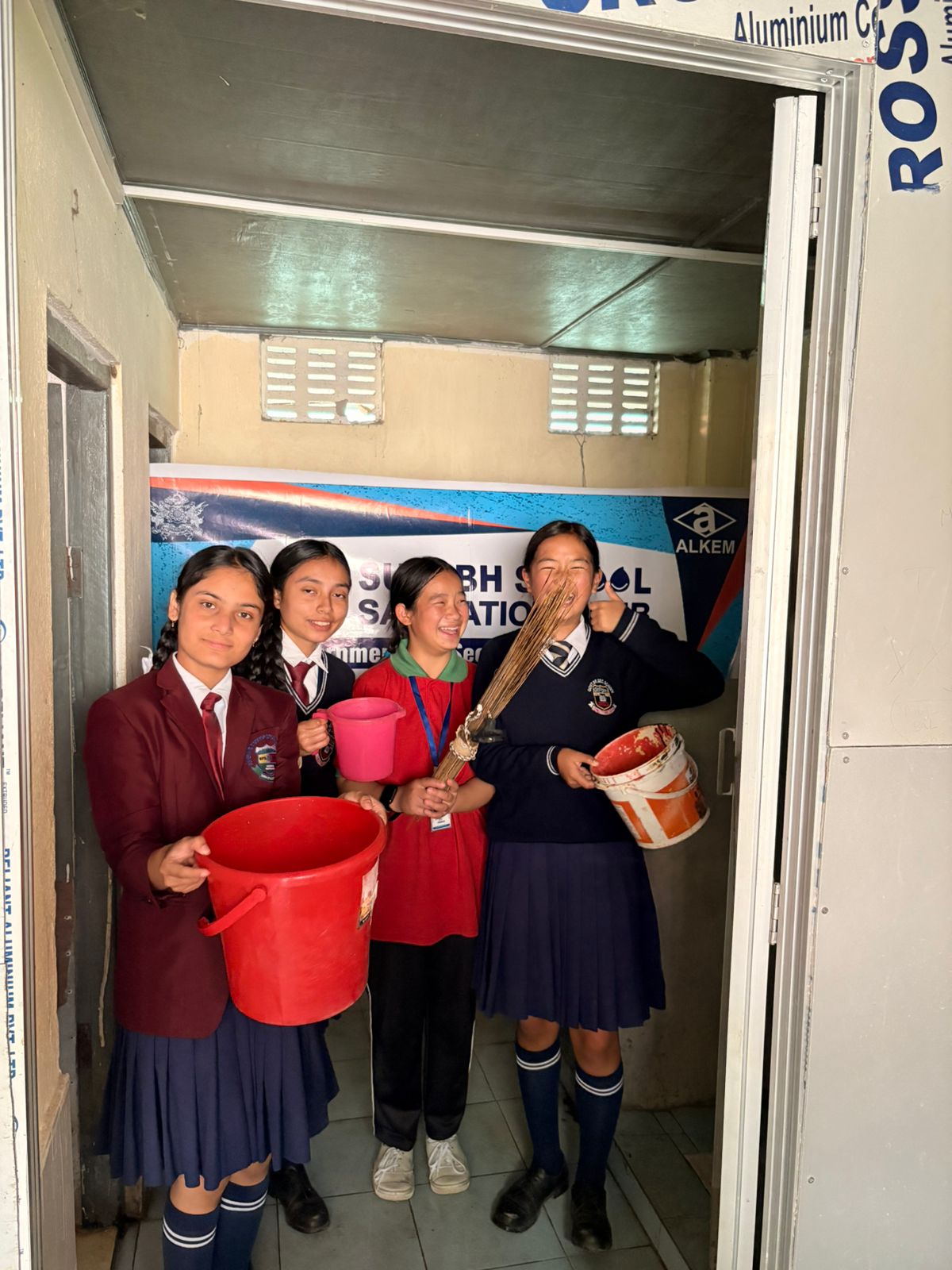


Sulabh and Safe School Environment!



















JOIN US AND MAKE AN IMPACT!
About 'Wash' In Schools
To achieve long-term effects for the school, the children, their parents, their future children and the community as a whole, a WASH in schools intervention should consist of the following key elements:
- Design and construction of child-friendly, gender sensitive facilities for sanitation, handwashing, water supply and solid waste collection.
- Development of adequate knowledge, attitudes and skills on hygiene through life skills-based hygiene education and formation of Sanitation Clubs in schools.
- Planning process that incorporates a set-up of appropriate plans for capacity building, operation and maintenance and follow-up




"THE PEOPLE SPEAK"
SOME FAMOUS, SOME LITTLE KNOWN

Shri Kunga Nima Lepcha
Hon’ble Education Minister,
Govt. of Sikkim

Shri Bhim Thatal
Director Higher Education,
Govt of Sikkim

Ms. Vaishnavi Tiwari
Senior Member,
Sulabh Sanitation Club

Dr. Pratibha Singh
WASH Specialist,
UNICEF, India

Ms. Geeta Khadka
Sanitation Club Member,
Sikkim

Shri Umesh Kumar
Principal Pelkhil School,
Thimpu Bhutan

Shri Ravinder Chakilam
Plant Head,
Alkem Labs, Sikkim

Ms Souvanace Bong- Be
SFA
Group France

frequently
asked questions
Why is lifeskills based education encouraged in WASH in schools?
Teaching is more than transmitting information
Life skills education uses teaching and learning methods that are more than the transmission of information. The teaching and learning methods are meant to be interactive and participatory with room for both information-focused sessions and child-centred sessions. Through the use of participatory learning activities, such as games, exercises, and group assignments, the students acquire a wider range of life skills than on health and hygiene alone. For example, as part of the lessons on health and hygiene, children may develop attitudes of respect for the opposite gender, for older and younger people and people weaker or less fortunate than they themselves. They could practice activities that show openness to and respect for habits of other groups.
Traditional approaches are often information-based and didactic, and often neglect the ‘real life’ applications of information and the role of attitudes and values or the need for interpersonal skills, especially related to sensitive issues and personal behaviour. Making healthy life choices, gaining greater resistance to negative pressures, and minimising harmful behaviour such as drug use and taking HIV/AIDS related risks is complex. The life skills approach is designed to reduce that complexity. Since hygiene education also aims at changing risk-behaviour, the life skills approach is perfect for application in this field.
What are child-friendly facilities for handwash, sanitation and water in schools?
The child-friendly approach to school hygiene, sanitation and water aims to design, construct and maintain WaSH facilities that are part of the learning environment, are hygienic and safe to use and can be sustained and maintained by the school community itself for by Child Cabinets / Sanitation Clubs.
School should offer enough capacity and minimal waiting time: When there are not enough facilities for the number of school children, children search for other places to urinate and defecate, ‘forget’ to wash their hands, throw garbage on the ground or drink water from unsafe sources. Ensuring the right capacity is usually not a matter of applying a simple ratio. There are some other important factors that determine the required capacity besides the total number of school children, such as the times when children are allowed to go to the toilet/drink water/ wash hand, the number of adults that are available to help the youngest children to go to the toilet and the future growth of the school population.
It should Stimulate children’s learning and development, and ensure that educational tools are designed in an age-appropriate way :Learning and development can best be stimulated interactively. When this is done in a stimulating, playful manner, children will be eager to put their new knowledge and skills into practice. Particularly in a school environment, the hygiene and sanitation facilities can provide the opportunity for this interaction and are a potential extension of the learning environment. This makes them a powerful tool for hygiene education.
A well-designed facility will lose its effect if it is not properly looked after. A good operation and maintenance plan will not only indicate who is responsible for cleaning, maintenance and the costs involved, it will also ensure involvement of children, teachers, parents and the community in the continuous process of monitoring and improving hygiene practices at school. More on this can be found in the chapter 5 on programme planning aspects.
What are indicators for a successful WASH in schools programme?
To be successful school sanitation and hygiene education must address a combination of hardware and software issues. Only in combination can the two conditions for better health of school children be met:
1. Availability of good facilities;
2. The adoption of healthy practices.
WASH in schools programmes therefore should focus on both effective education and effective facilities.
What impact can we expect from WASH in schools?
Because children spend a significant amount of time in and around their schools, such situations have a major impact on their well-being . Also, when a school lacks access to a basic water supply and sanitation facilities and its students have poor hygiene habits, the incidence of major childhood illnesses among its students will increase. This will adversely affect school children’s participation , lowering enrolment rates and increasing absenteeism, poor classroom performance, and early school dropout. The lack of appropriate facilities may discourage children from attending school; Girls who are menstruating, in particular, would rather not go to school than have to deal with such a lack of privacy, and with appropriate WASH facilities, gender can be addressed.It will also decrease learning capacity as measured in educational performance, outcomes, and productivity. In addition, the unsanitary conditions typical of many school toilets will send children the wrong message about the importance of sanitation.
Further WASH in schools focuses on the development of life-skills on hygiene among school children. What children learn today about hygiene and prevention of sanitation and water borne diseases, is most likely to be passed on to their peers, family members and their future children.

Activities Conducted
By The Sanitation Clubs
List Of Activities Conducted By The Sanitation Clubs
Group Hand Washing
Wash Room Cleaning By Students & Teachers
School Compound Cleaning
Composting / Vermi Composting
Best Out of Waste
Menstrual Hygiene Sessions
Interaction with Parents on Hygiene
Drinking Water Quality Checking
Rallies & Door to Campaign on Sanitation & Health
Tree Plantation
Anti Plastic Drive or Activities or Innovation from Things Made from Plastic
WASH
IN SCHOOL
Water
The United Nations recognizes water, sanitation, and hygiene (WASH) in schools as crucial for increasing access and improving learning outcomes, emphasizing its importance in achieving Sustainable Development Goal 6 (SDG 6) by 2030. Children in rural areas spend significant time collecting water, hindering their learning and development. Clean water for schools can alleviate this burden, especially for women and children, making it crucial for all stakeholders to address these challenges. Providing access to drinking water gives students a healthy alternative to sugar-sweetened beverages. It helps to increase students’ overall water consumption, maintain hydration, and reduce energy intake if substituted for sugar-sweetened beverages. Adequate hydration also may improve cognitive function in children and adolescents.
Sanitation
Personal hygiene usually brings to mind especially hand, foot, nail, face, eye and ear hygiene, hair care and cleansing, oral and dental care, regular bathing, using soap and water in cleaning processes and using menstrual absorbents during menstruation. It is also important that the tools to be used in these cleaning works are used personally and cleanly. Hygiene is not just about personal hygiene. Among other components of hygiene are food hygiene, home hygiene and general hygiene. It is obvious that attention should be paid also to food and home hygiene in the fight against the pandemics
Hygiene
Over 443 million school days are lost each year because of water-related illnesses and children falling ill and having to miss school. Sanitation plays a vital role in ensuring students can maintain a standard of personal hygiene that will allow them to flourish and learn. Sanitary wash rooms in schools have a positive effect on children’s physical and cognitive growth. If they have access to safe, hygienic bathrooms they will be less likely to miss school due to illness or embarrassment. Sanitation has also been found to be a key factor in either keeping girl children in school or as the reason why they miss school.
Participation
A clean and healthy school environment must be properly done and maintained. First, is to form a team that will be in charge of all the cleaning and maintenance issues of the schools, train and educate them so that they will clearly understand their duties and responsibilities. One of the most important things, is to have the students involved. Things such as picking up litter on the floor, avoiding vandalism on tables and chairs and arranging it accordingly, maintaining the cleanliness of toilets by flushing after every use, throwing garbage in the proper trash can and washing hands now and then to avoid the spread of germs.


















